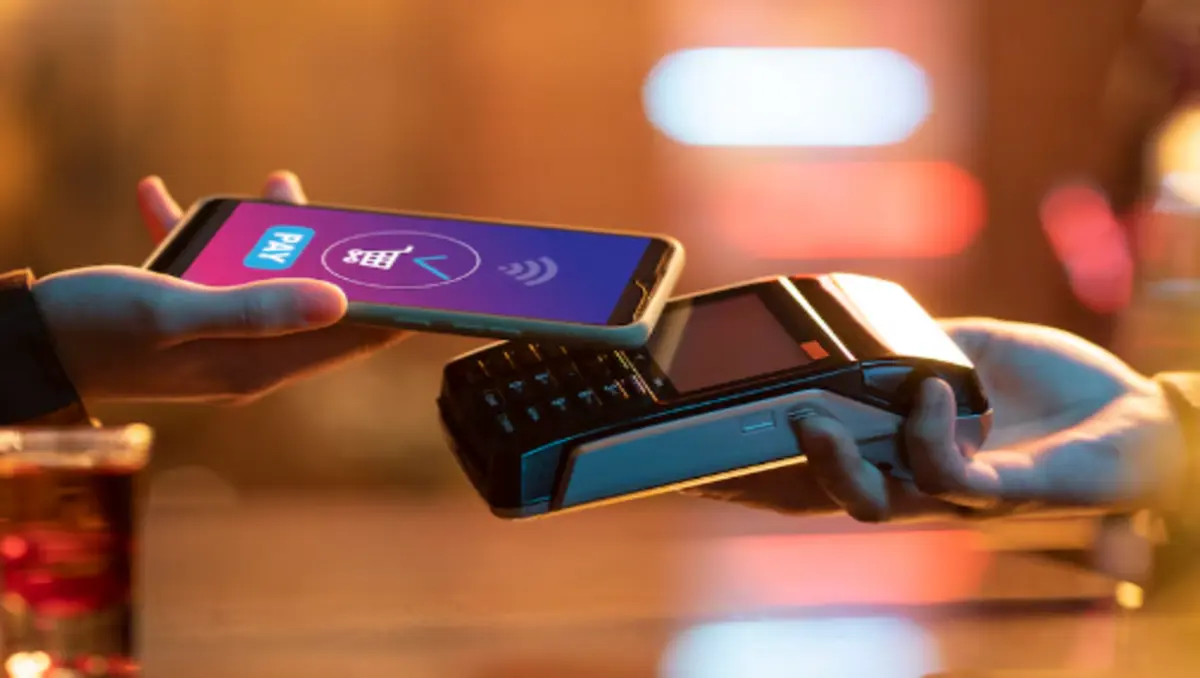In today’s world, technology has changed the way we live, work, and communicate. One of the most significant advancements in recent years has been the rise of digital banking. This transformation is not just about replacing traditional banking methods but also about creating a more convenient, accessible, and efficient way for people to manage their finances. As we continue to embrace the digital age, digital banking is becoming an essential part of daily life, reshaping the financial landscape.
In this blog post, we will explore what digital banking is, how it works, and why it’s becoming the go-to choice for individuals and businesses alike. We’ll also discuss the human concepts behind this shift and how it’s benefiting everyday people. From convenience to security, digital banking is changing the way we think about money.
What is Digital Banking?
Digital banking refers to the use of technology to offer banking services and products online. Instead of visiting a physical bank branch, customers can access their accounts, transfer funds, pay bills, apply for loans, and perform other banking activities through the internet. Digital banking includes everything from online banking platforms and mobile apps to digital wallets and even cryptocurrency services.
Traditional banks are evolving and incorporating digital-banking into their offerings. With the rise of Fintech (Financial Technology) companies, even startups and online-only banks are revolutionizing the banking industry. The concept of digital-banking allows people to manage their finances 24/7, providing access to their money at any time from any location. It’s no longer necessary to rely on physical branches or banking hours to access services.
The Evolution of Banking: From Physical to Digital
Banking, like many industries, has undergone a significant evolution over the centuries. In the early days, banking was done through face-to-face interactions, where customers would visit local banks to deposit or withdraw money. Over time, innovations such as checks and ATMs started to make banking more efficient.
The internet age ushered in a new chapter in banking with online banking platforms. These platforms allowed users to access basic banking services like checking balances, transferring funds, and paying bills from the comfort of their own homes. However, the development of smartphones and mobile apps has taken digital-banking to the next level. Now, banking can be done from anywhere with an internet connection, and financial services are just a tap away.
Key Features of Digital-Banking
- 24/7 Access
One of the most attractive aspects of digital-banking is its availability at any time. No longer do customers need to plan their banking around branch hours. Whether it’s early in the morning or late at night, digital-banking offers round-the-clock access to your financial accounts. This level of convenience makes it much easier for people to manage their finances at their own pace. - Mobile Banking Apps
With the advent of smartphones, mobile banking apps have become one of the most popular ways to access banking services. These apps allow users to check their balances, make payments, transfer money, and even apply for loans all from their mobile devices. This level of accessibility is transforming how we manage money, making it easier for people to stay on top of their financial activities. - Online Loan Applications
Gone are the days of sitting in a bank branch and filling out lengthy loan applications. With digital-banking, customers can apply for loans online in a matter of minutes. Whether it’s a personal loan, mortgage, or auto loan, digital platforms allow for faster, more convenient applications, often with lower interest rates compared to traditional loans. - Paperless Transactions
Digital banking promotes a paperless environment, reducing the need for physical paperwork in banking processes. This not only makes transactions faster and more eco-friendly but also provides a cleaner and more organized way to handle finances. E-statements, digital receipts, and online documents ensure that you can keep track of your financial history without the clutter of paper. - Security and Encryption
Many people have concerns about the security of online transactions, but digital banking services have made strides in ensuring the safety of your personal information. Banks use encryption and two-factor authentication to protect customer data and prevent unauthorized access to accounts. Features like fingerprint recognition and face ID have further bolstered the security of mobile banking.

How Digital Banking Benefits Consumers
- Convenience and Flexibility
In today’s fast-paced world, time is a precious commodity. Digital banking allows customers to conduct their banking activities quickly and easily without having to wait in long queues or visit a physical branch. Whether it’s transferring money to a friend or checking your account balance, digital banking offers a seamless and user-friendly experience. - Cost-Effective
Digital banks often offer lower fees and better interest rates compared to traditional banks. This is because digital-only banks don’t have the overhead costs associated with maintaining physical branches. As a result, they can pass these savings on to customers in the form of lower fees, higher interest rates on savings accounts, and more competitive loan options. - Accessibility for All
Digital banking has the potential to make financial services accessible to a wider range of people. In underserved or rural areas, where physical bank branches may be scarce, digital banking allows individuals to access banking services with just a mobile phone and an internet connection. This is particularly beneficial for the unbanked or underbanked populations around the world. - Better Financial Management
Digital banking tools often come with built-in budgeting and financial management features. These tools allow users to track their spending, set savings goals, and get insights into their financial habits. This can help individuals make more informed decisions about their money, avoid overspending, and plan for the future. - Global Reach
For those who need to transfer money internationally, digital banking offers a cost-effective and fast alternative to traditional methods like wire transfers. Digital platforms such as PayPal and TransferWise enable people to send money across borders quickly, with lower fees and more competitive exchange rates.
Human Concepts Behind Digital Banking
When we talk about the human concept behind digital banking, we’re focusing on the ways this technology is making life easier and more efficient for individuals. The human-centric approach emphasizes user experience, accessibility, and empowerment.
- Empowering Consumers
Digital banking puts power in the hands of consumers, giving them control over their financial lives. With access to real-time information, budgeting tools, and the ability to make transactions at their convenience, customers feel more in charge of their money. This empowerment fosters better financial habits and promotes a culture of financial literacy. - Personalization
Digital banking platforms use data and AI to offer personalized experiences for their users. By analyzing customer behavior and preferences, these platforms can suggest tailored services, recommend better savings plans, or even offer financial advice based on an individual’s spending patterns. This personalization adds an extra layer of convenience and relevance to the banking experience. - Simplified User Experience
The design and functionality of digital banking platforms are centered around the idea of simplicity. From easy-to-navigate mobile apps to straightforward online banking interfaces, these platforms prioritize the user experience. The aim is to make banking as intuitive and effortless as possible, removing the barriers that come with traditional banking. - Building Trust
Trust is essential in any relationship, and digital banking is no exception. By offering secure platforms and transparent services, digital banking builds trust with its customers. Trust is further reinforced by the continuous improvement of security features and the adoption of advanced technologies like AI and blockchain, which ensure that customer data is protected at all times.
The Future of Digital Banking
As technology continues to evolve, the future of digital banking looks promising. We can expect even more advanced features such as AI-driven financial advice, biometric security systems, and the integration of blockchain for faster and more secure transactions. The role of digital banking will only continue to grow, and it’s exciting to think about how it will further transform the way we manage our finances.
One area that will likely see major developments is the rise of digital currencies. Central banks around the world are exploring the idea of creating their own digital currencies, which could revolutionize the way people make payments and transfer money globally. Additionally, blockchain technology has the potential to increase transparency and security in the financial sector, reducing fraud and ensuring trust.

Conclusion
Digital banking is more than just a trend; it’s a fundamental shift in how we interact with money. With its accessibility, convenience, and cost-effectiveness, digital banking is transforming the financial landscape for individuals and businesses alike. By embracing technology, consumers can take control of their financial future, improve their money management skills, and access a world of financial services with ease.
read more
https://financekhush.com/what-is-stock-analysis-and-how-does-it-work-2025/
As the world continues to evolve, so will digital banking. With advancements in technology, digital banking will only become more seamless, personalized, and secure, offering new opportunities for individuals to manage their finances more effectively. Whether you’re new to digital banking or a seasoned user, there’s no doubt that it’s here to stay—and it’s changing the way we think about money, forever.
Here are top 10 best faq’s
1. What is digital banking?
Digital banking refers to the use of online platforms and mobile apps to access banking services like transferring money, paying bills, applying for loans, and managing finances without visiting a physical branch.
2. How is digital banking different from traditional banking?
Digital banking operates exclusively online or via mobile apps, allowing users to access services 24/7 from anywhere. Traditional banking requires visiting physical branches during business hours, and services are more limited compared to digital platforms.
3. Is digital banking safe?
Yes, digital banking is secure. Banks use advanced encryption, multi-factor authentication, and biometric verification methods (such as fingerprint or facial recognition) to protect user data and prevent unauthorized access to accounts.
4. Can I open an account online through digital banking?
Yes, many banks and financial institutions offer online account opening services. You can complete the process digitally by submitting necessary documents, providing personal information, and verifying your identity.
5. What are the benefits of using digital banking?
The benefits of digital banking include 24/7 access to banking services, lower fees, faster transactions, easy loan applications, better financial management tools, and greater convenience for users.
6. What devices can I use for digital banking?
You can use any device with internet access, including smartphones, tablets, laptops, and desktops, to access digital banking services. Most banks offer mobile apps for iOS and Android devices for easy access on the go.
7. How do I transfer money using digital banking?
To transfer money, you need to log into your digital banking account, choose the “transfer” option, enter the recipient’s details, and the amount to be transferred. You can usually transfer funds to another bank account, pay bills, or send money via digital wallets.
8. What should I do if I forget my digital banking password?
If you forget your password, you can use the “Forgot Password” option on the login page. You will typically be asked to verify your identity via email or SMS, and then you can reset your password.
9. Are digital banks regulated?
Yes, digital banks are regulated by financial authorities just like traditional banks. They must adhere to the same standards and regulations related to customer protection, data security, and financial transactions.https://chatgpt.com/
10. Can I access my account if I lose my phone or device?
If you lose your phone or device, you can still access your account by logging in from another device. Ensure your account is protected with multi-factor authentication. You should also contact your bank immediately to lock or suspend access to your account if you suspect unauthorized access.
